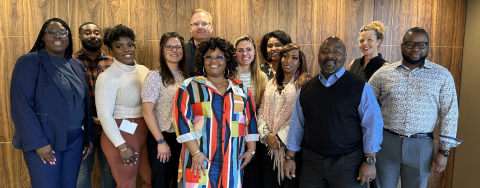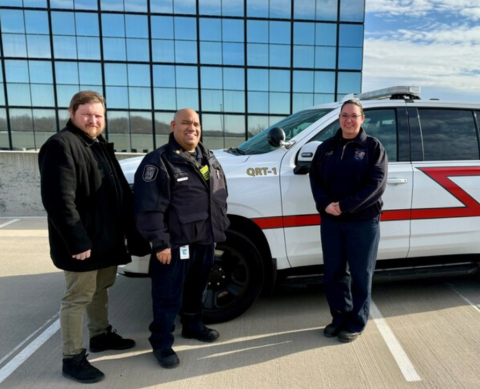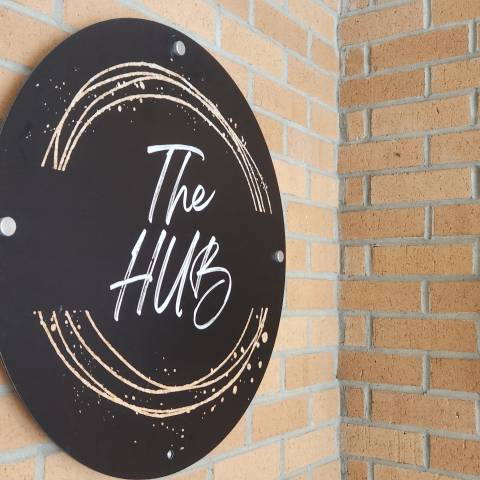You are here
Partnering for Overdose Prevention
The Overdose Data to Action (OD2A) project operates within a comprehensive data-to-action framework, utilizing various data sources to enhance drug overdose prevention efforts. These data include monitoring, process and outcome evaluations, and qualitative insights such as interviews and focus groups, all of which inform and enrich monitoring practices. This approach enables funded jurisdictions to respond swiftly to community needs, using data-driven strategies to reduce overdose deaths and mitigate substance use-related harms. Sustaining strong key partnerships within this framework is vital to the program’s success.
To bolster the capacity of state, local and territorial health departments, as well as community-based organizations (CBOs), the CDC Foundation supports the OD2A program by recruiting and hiring critical personnel. These include State Unintentional Drug Overdose Reporting System (SUDORS) abstractors, epidemiologists, peer navigators, program implementation specialists, data visualization specialists, next of kin social workers and other highly trained overdose prevention and response professionals.
The OD2A program has:
- Deployed over 200 field staff across 45 jurisdictions
- Managed recruitment, training and onboarding
- Provided specialty training to enhance jurisdictional capacity in:
- Peer learning
- Linkage to care
- Inclusive-driven overdose response
- Recovery support certification
This multifaceted support ensures that OD2A teams are well-equipped to tackle the evolving overdose epidemic.
A recent update from the Centers for Disease Control and Prevention (CDC) announced that provisional data indicates a 27 percent decrease in predicted drug overdose deaths in 2024 compared to 2023 on average. CDC also cited the Overdose to Data (OD2A) program as an example of one of the programs helping to contribute to the overall decline.

Our Work in Action
Peer Support in Baltimore County, Maryland
The Overdose Data to Action team in Baltimore County provides a Quick Response Team (QRT) model, which uses EMS data to identify regions with high concentrations of overdoses; responds to live overdose calls and follows up on non-fatal overdoses; and provides community-based overdose prevention support. Peer Recovery Specialist Roger Miller’s lived experience was a vital tool for connecting with individuals and providing immediate support. During his time with the QRT, Roger bridged the gap between individuals and support systems; navigated the local landscape of substance use and recovery services; collaborated with first responders to reduce stigma and document encounters; and followed up with participants to ensure they received ongoing support.

Marion County Naloxone Leave Behind Project
The Naloxone Leave Behind Project launched July 29, 2024: the Marion County Public Health Department, CDC Foundation Implementation Specialist (Lakin Clements) and Indianapolis Emergency Medical Services, targets individuals at high risk of subsequent overdoses by providing them with naloxone, an opioid overdose reversal medication, directly at the scene of an overdose. The naloxone kits contain two doses of naloxone, resource cards and educational materials for overdose patients, their families and bystanders to increase access to lifesaving medication and information.
Success in Arizona
Linda Cifuentas, a program implementation specialist in Arizona, has partnered with community stakeholders to address the opioid epidemic through a range of impactful strategies. Her efforts have included establishing partnerships with tribal communities, conducting outreach in encampments, public spaces, and transportation hubs, and supporting Community Action Boards and Peer Navigators. She also implemented a stigma-reduction strategy targeting healthcare providers, facilitated overdose prevention education at the Tucson Indian Center and CODAC, and developed a data-driven overdose prevention strategy.
New Model in Kentucky
The Kentucky River Hub operates as a Recovery Community Center (RCC), delivering a wraparound model of care for individuals impacted by substance use disorder (SUD). Its services reflect a public health approach that combines community-based overdose prevention support with recovery-oriented support, basic needs fulfillment and peer empowerment was established to address critical service gaps in overdose prevention and recovery support across the Kentucky River District. With a focus on improving access to care and reducing overdose deaths, the project aligns with several OD2A strategies, including linkage to treatment, recovery and/or other overdose prevention services. The HUB employs three CDC Foundation Peer Navigators—individuals with lived experience in recovery—who serve as trusted guides, connecting community members to treatment services, community-based overdose prevention resources and essential support like transportation, ID recovery, housing and food. These navigators play a vital role in building rapport, reducing stigma and helping individuals navigate complex systems of care.
Activities led by Peer Navigators include:
- Conducting community-based outreach and overdose prevention education;
- Offering one-on-one navigation support for treatment and social services; and
- Participating in multidisciplinary collaborations to identify and address local overdose risks.
By embedding Peer Navigators within the HUB, the project ensures culturally responsive, trauma-informed and person-centered service delivery in a high-need rural setting.

Highlights from the Field

D’Artagnan Brownlee led the establishment of the Charleston County Overdose Fatality Review (OFR) process to analyze local trends and enhance community responses to overdose deaths. Through strong collaboration with local agencies, he developed community-based overdose prevention support grounded in real-time data and expanded overdose prevention efforts to address broader public health concerns, including safe infant sleep, bridge jumping suicides, and elder abuse/neglect.
In addition to his data-driven approach, D’Artagnan focused on human-centered engagement—building trusted relationships with families, supporting them through loss, and connecting them to critical community resources. He also advocated for death-positive and non-conventional memorialization practices to help reduce stigma surrounding death and substance use.
Learn More
This OD2A program is supported by the Centers for Disease Control and Prevention (CDC) of the U.S. Department of Health and Human Services (HHS) as part of a financial assistance award totaling $17,000,000, with 100 percent funded by CDC/HHS. A portion of this funding supported the project described above. The contents are those of the author(s) and do not necessarily represent the official views of, nor an endorsement by, CDC/HHS, the U.S. Government, or the CDC Foundation.
- Centers for Disease Control and Prevention
- United States of America
